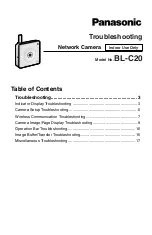
Index
I-2
ni.com
stability, A-6
transfer characteristics, A-5
voltage output, A-5 to A-6
AOGND signal
analog output signal connections, 4-17
description (table), 4-3
I/O signal summary (table), 4-5
B
base address configuration, C-2
bipolar input range, 3-3
block diagram, 3-1
C
C API, using with NI-DAQ, C-2
cables.
See also
I/O connectors.
custom cabling, B-1
field wiring considerations, 4-40 to 4-41
optional equipment, 1-4
using with I/O connectors (table), 4-1
calibration, 5-1 to 5-3
external calibration, 5-2
loading calibration constants, 5-1 to 5-2
self-calibration, 5-2
specifications, A-8
charge injection, 3-4, C-4
commonly asked questions.
See
questions and
answers.
common-mode signal rejection
considerations, 4-16
configuration
description, 2-2 to 2-3
questions about, C-2
connectors.
See
I/O connectors.
conventions used in manual,
xi-xii
CONVERT* signal
DAQ timing connections, 4-27 to 4-28
questions about, C-5
signal routing (figure), 3-5
correlated digital I/O.
See
digital I/O.
crosstalk, multiple channel scanning, C-4
custom cabling, B-1
D
DAC0OUT signal
analog output signal connections, 4-17
description (table), 4-3
I/O signal summary (table), 4-5
DAC1OUT signal
analog output signal connections, 4-17
description (table), 4-3
I/O signal summary (table), 4-5
DAQ timing connections, 4-21 to 4-30
AIGATE signal, 4-28
CONVERT* signal, 4-27 to 4-28
EXTSTROBE* signal, 4-30
SCANCLK signal, 4-29 to 4-30
SISOURCE signal, 4-29
STARTSCAN signal, 4-25 to 4-26
TRIG1 signal, 4-22 to 4-23
TRIG2 signal, 4-23 to 4-24
typical posttriggered acquisition
(figure), 4-21
typical pretriggered acquisition
(figure), 4-22
DAQ-STC system timing controller, 1-1, C-1
DGND signal
description (table), 4-3
I/O signal summary (table), 4-5
DIFF mode
description (table), 3-2
recommended input configuration
(figure), 4-9
differential connections, 4-10 to 4-13
ground-referenced signal sources, 4-11
nonreferenced or floating signal sources,
4-12 to 4-13
questions about, C-3
when to use, 4-10







































